melanocephalum
Avid Member
So it's not a "new" species, in fact was originally described by Hewitt in 1935.
When it comes to information online for this species it's virtually non-existent.
Some background information:
Assessment rationale: Has a restricted range, with EOO and AOO below the Vulnerable thresholds. Habitat is se- verely fragmented [B1a+2a] and most of the AOO is with- in a vulnerable ecosystem classified as ‘hardly protected’ SURICATA 1 (2014)
(Driver et al. 2005). Occurs in only one small protected area (Dwesa Wildlife Reserve, 37 km2). Overall, its range is currently heavily impacted by small-scale agriculture (Driver et al. 2005). There is a continuing decline in range and the extent and quality of habitat, as the area has high potential for increased agriculture, afforestation and alien plant invasions. The number of subpopulations and/or locations is unknown.
Threats: Habitat is severely fragmented by subsistence agriculture (Driver et al. 2005). The greatest threats are increased agriculture, afforestation and alien plant invasions.
Interestingly enough, we only found the species on tall long-stemmed grasses like Narrow Leaved Turpentine Grass which is perennial. The literature makes mention of this species occurring in forest canopies and shrubs but in this population which has not been recorded before we found this to be untrue.
The animals were only found on the tall grasses at three separate sites.
Bradypodion kentanicum - Kentani Dwarf Chameleon is not a species you'll see for sale or in the trade. Which is uncommon for a lot of the South African Chameleons.
Bradypodion kentanicum - Kentani Dwarf Chameleon
Adult Female:

Showing aggressive colours towards a male:

Another adult female in situ:

Not small gular crests.

Adult Male in situ:

Same male showing bright tubercles.

Juvenile male:

Same male:

Juvenile female:

Habitat:

More Habitat:

Good friend Luke Kemp, photographing Bradypodion kentanicum - Kentani Dwarf Chameleon

Myself with an adult male for size reference:

Another successful venture gathering information in conjunction with Herpetological Conservation International

More images available over at: www.tyroneping.co.za
Thanks for looking.
Best.
When it comes to information online for this species it's virtually non-existent.
Some background information:
Assessment rationale: Has a restricted range, with EOO and AOO below the Vulnerable thresholds. Habitat is se- verely fragmented [B1a+2a] and most of the AOO is with- in a vulnerable ecosystem classified as ‘hardly protected’ SURICATA 1 (2014)
(Driver et al. 2005). Occurs in only one small protected area (Dwesa Wildlife Reserve, 37 km2). Overall, its range is currently heavily impacted by small-scale agriculture (Driver et al. 2005). There is a continuing decline in range and the extent and quality of habitat, as the area has high potential for increased agriculture, afforestation and alien plant invasions. The number of subpopulations and/or locations is unknown.
Threats: Habitat is severely fragmented by subsistence agriculture (Driver et al. 2005). The greatest threats are increased agriculture, afforestation and alien plant invasions.
Interestingly enough, we only found the species on tall long-stemmed grasses like Narrow Leaved Turpentine Grass which is perennial. The literature makes mention of this species occurring in forest canopies and shrubs but in this population which has not been recorded before we found this to be untrue.
The animals were only found on the tall grasses at three separate sites.
Bradypodion kentanicum - Kentani Dwarf Chameleon is not a species you'll see for sale or in the trade. Which is uncommon for a lot of the South African Chameleons.
Bradypodion kentanicum - Kentani Dwarf Chameleon
Adult Female:
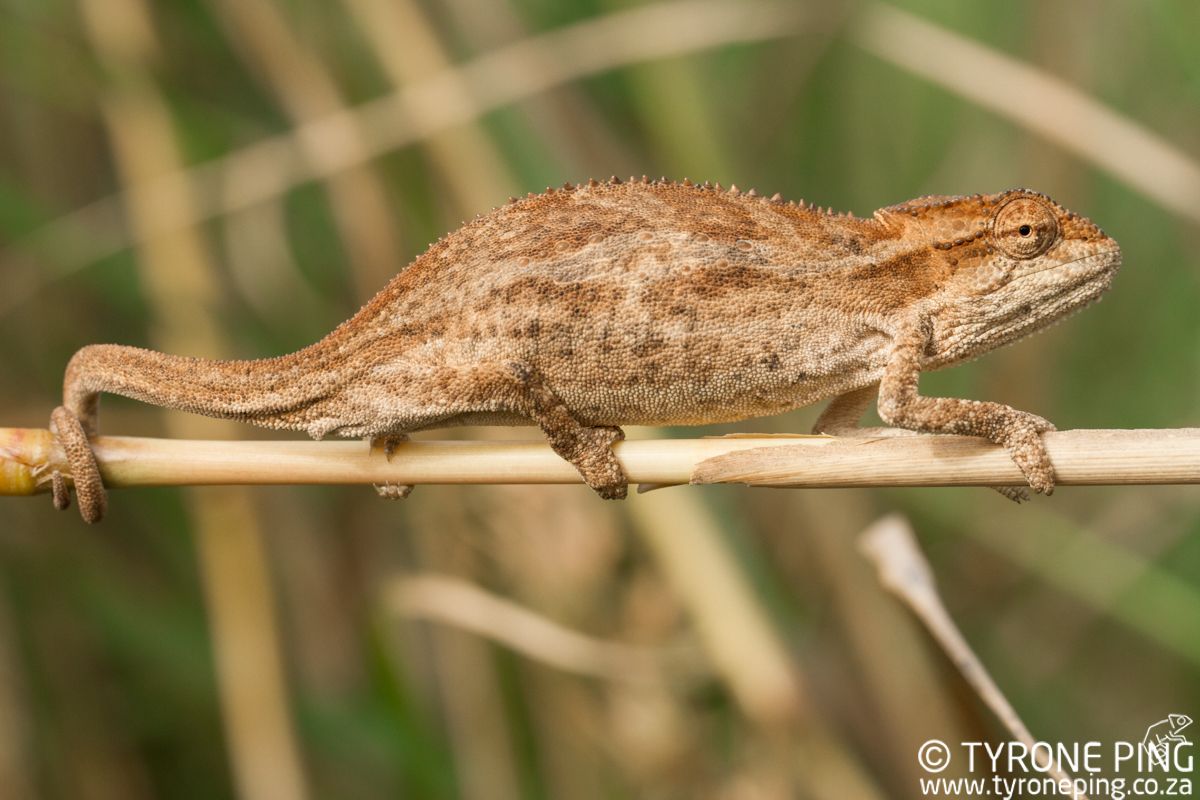
Showing aggressive colours towards a male:
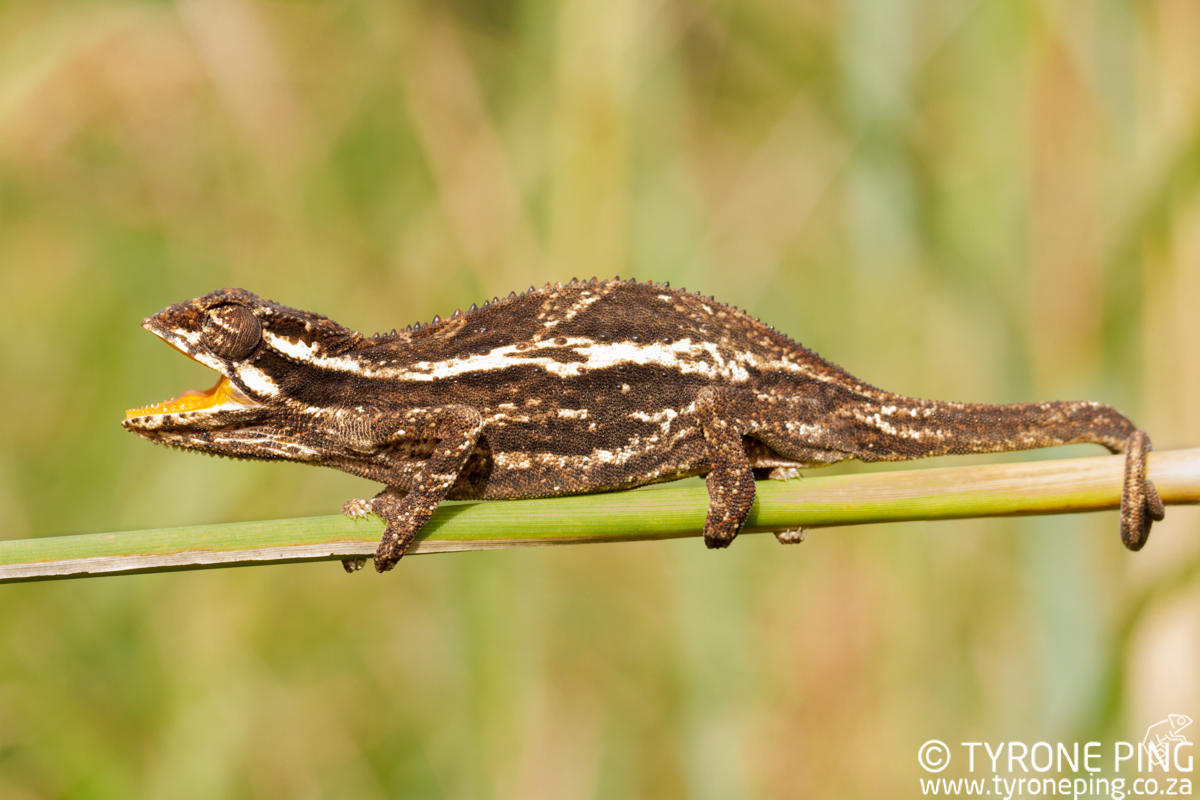
Another adult female in situ:
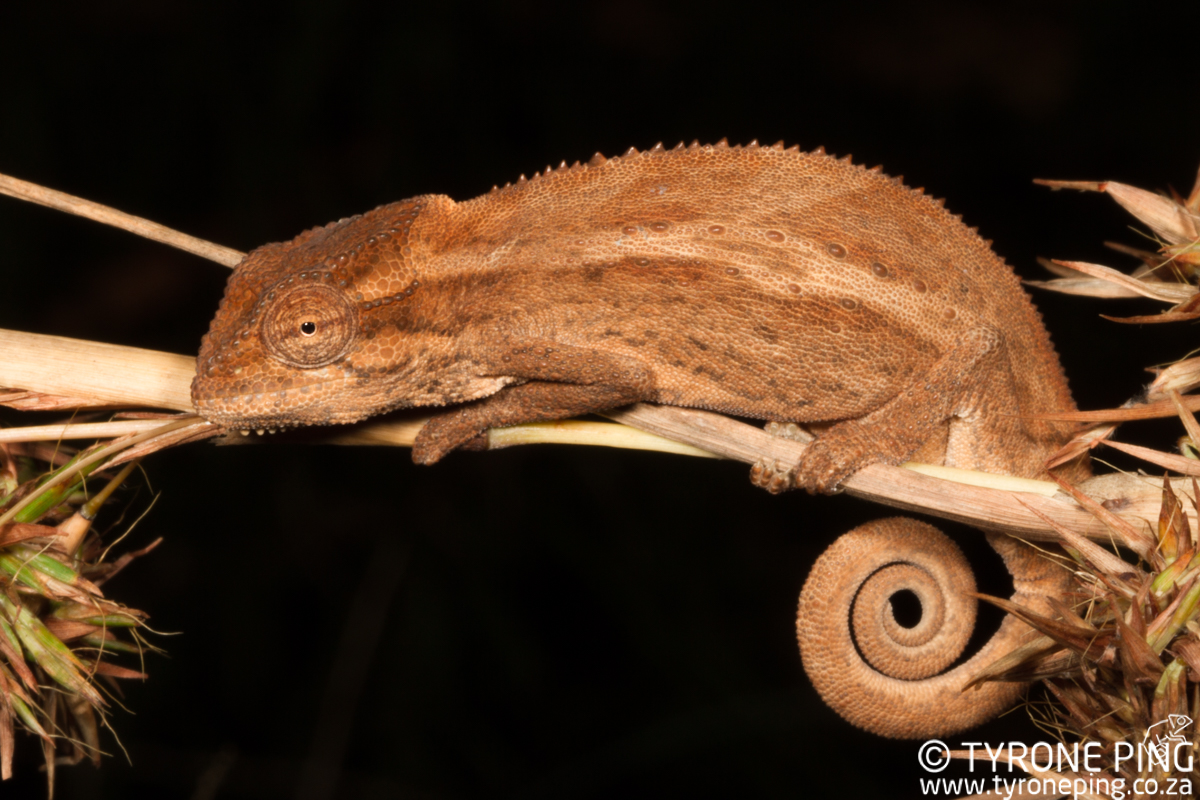
Not small gular crests.
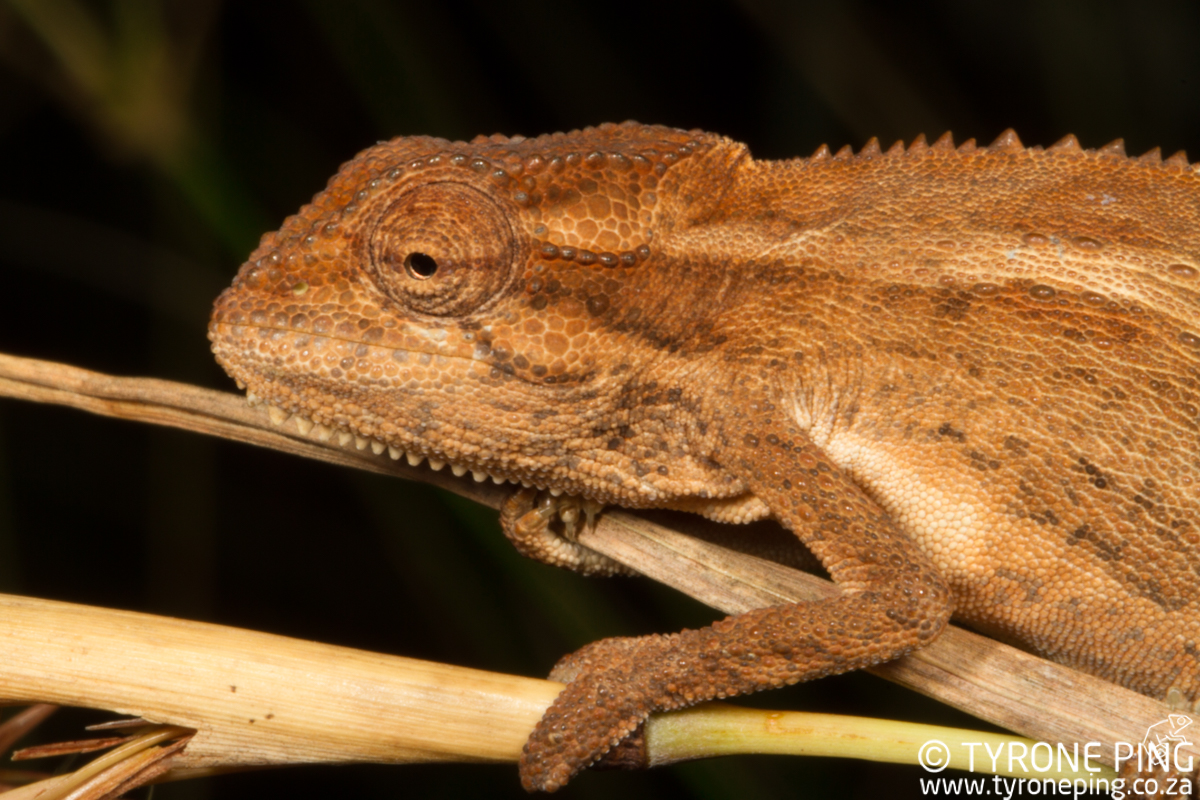
Adult Male in situ:
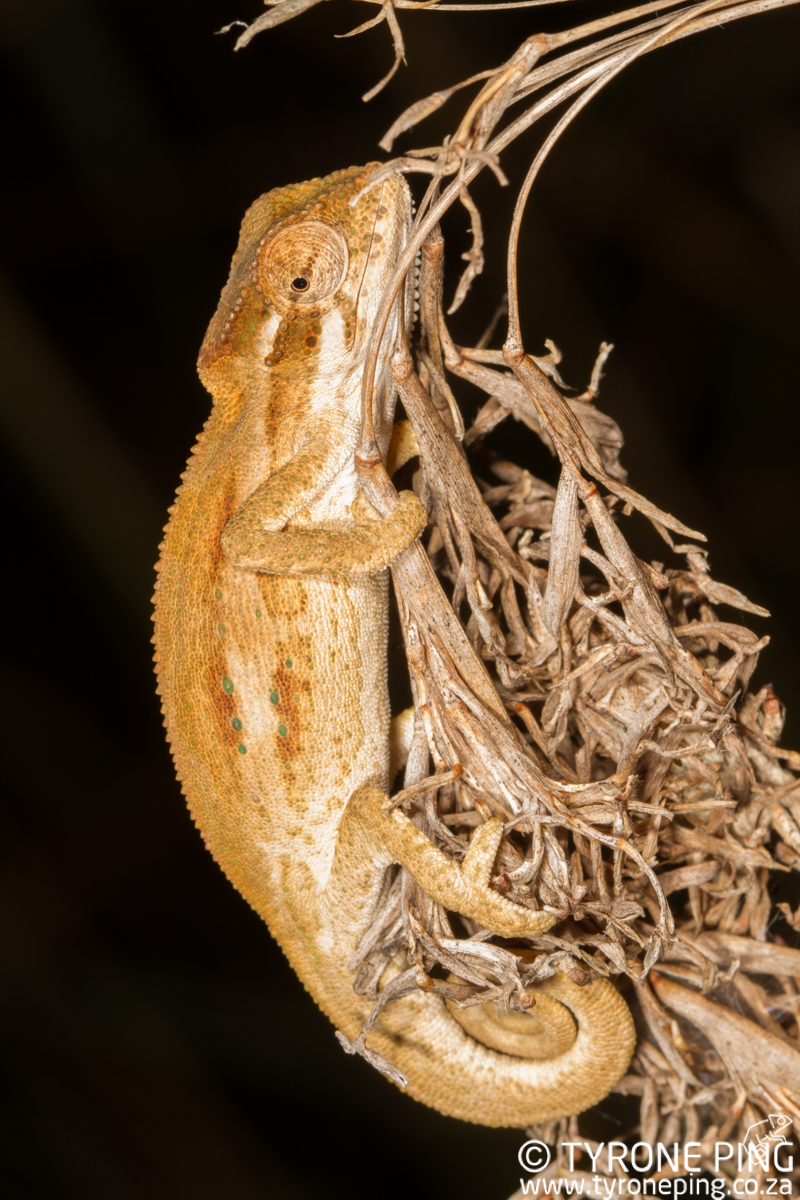
Same male showing bright tubercles.

Juvenile male:
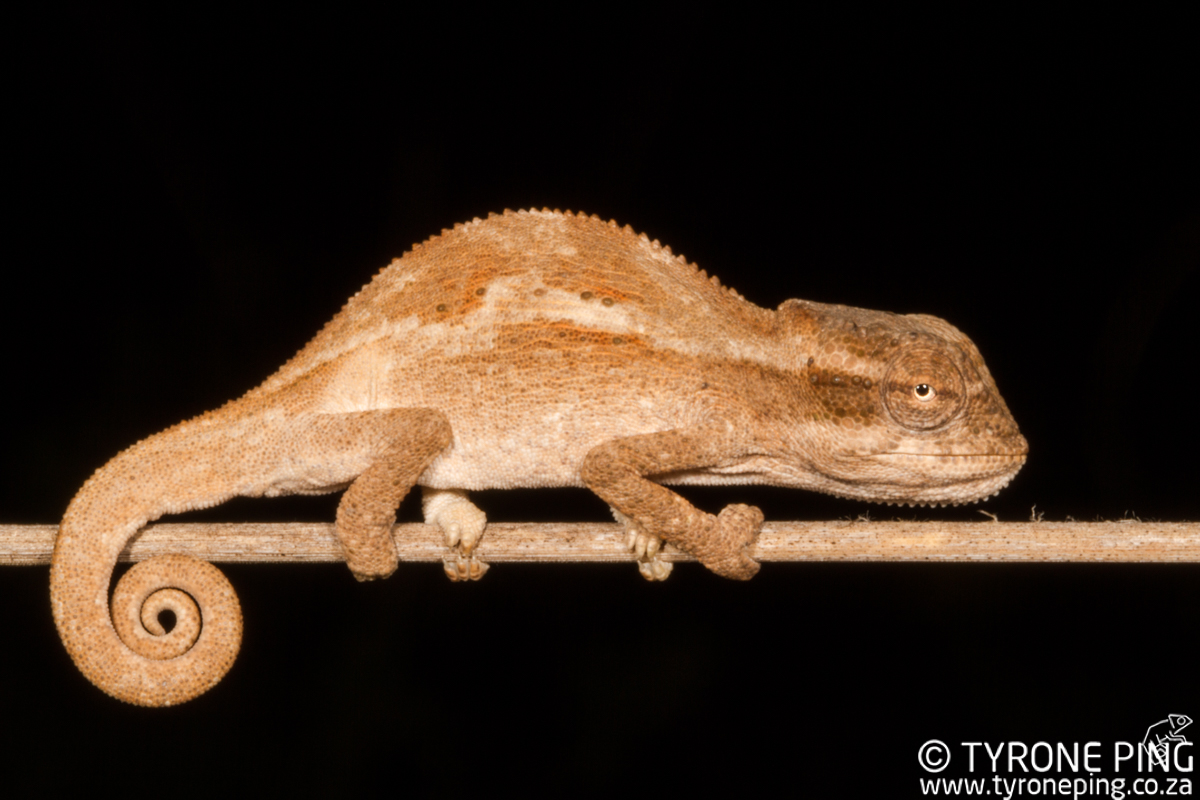
Same male:
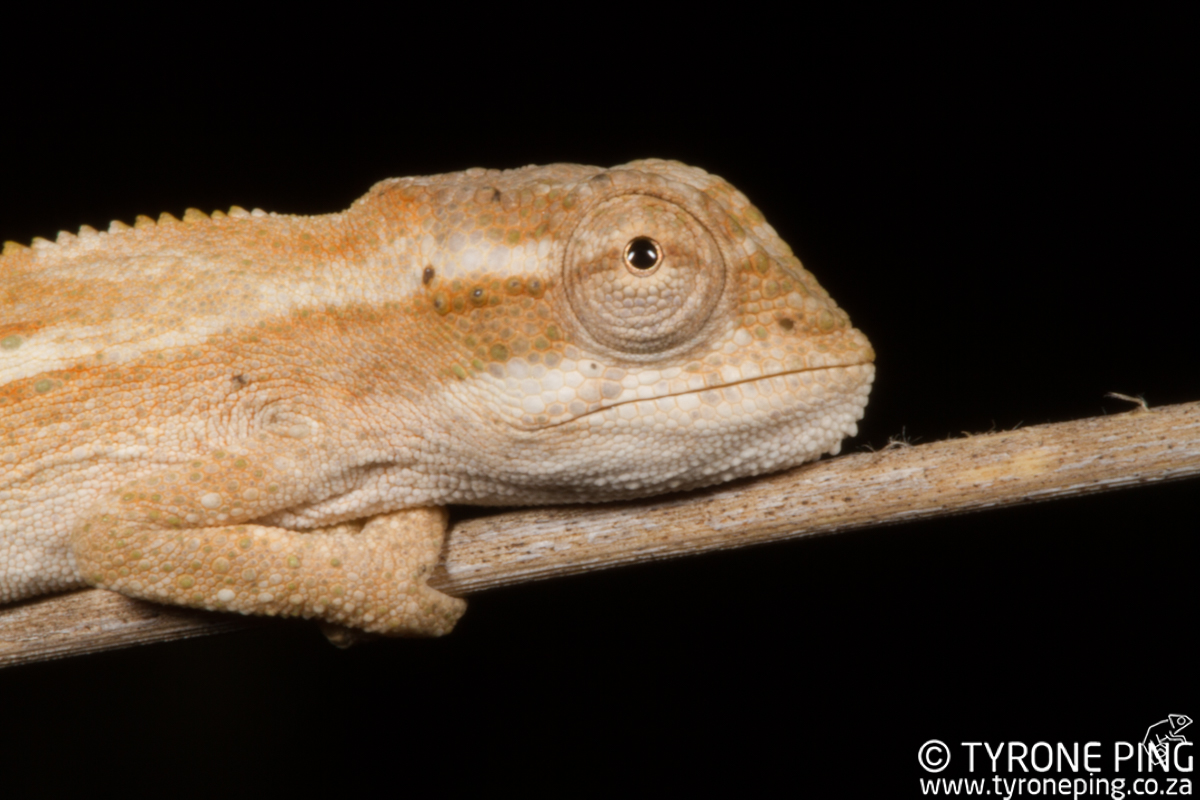
Juvenile female:
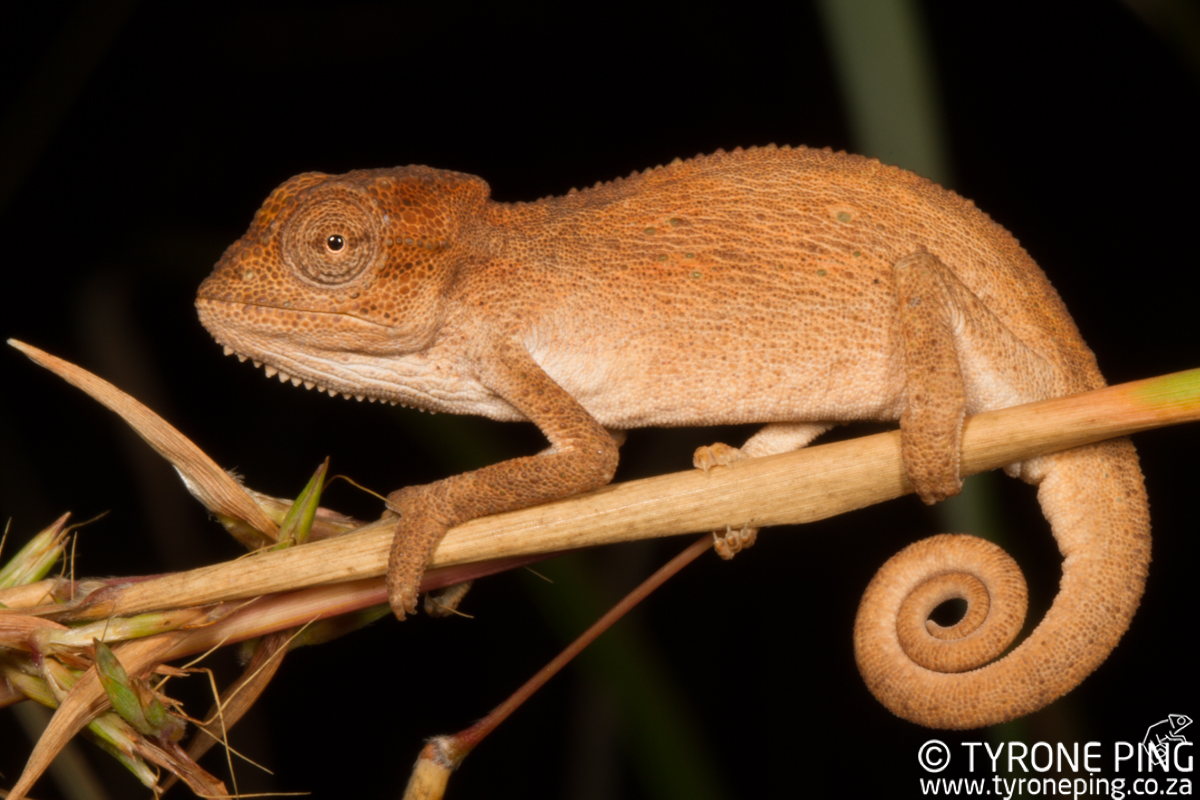
Habitat:
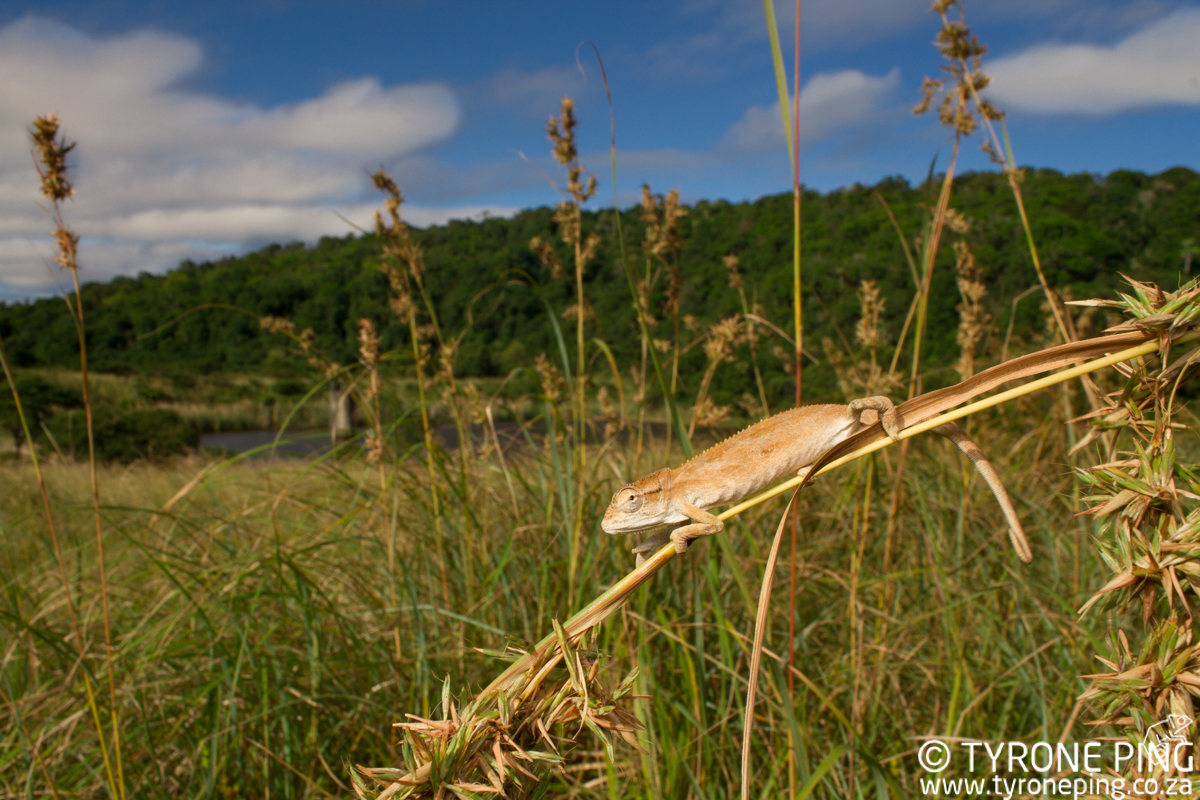
More Habitat:
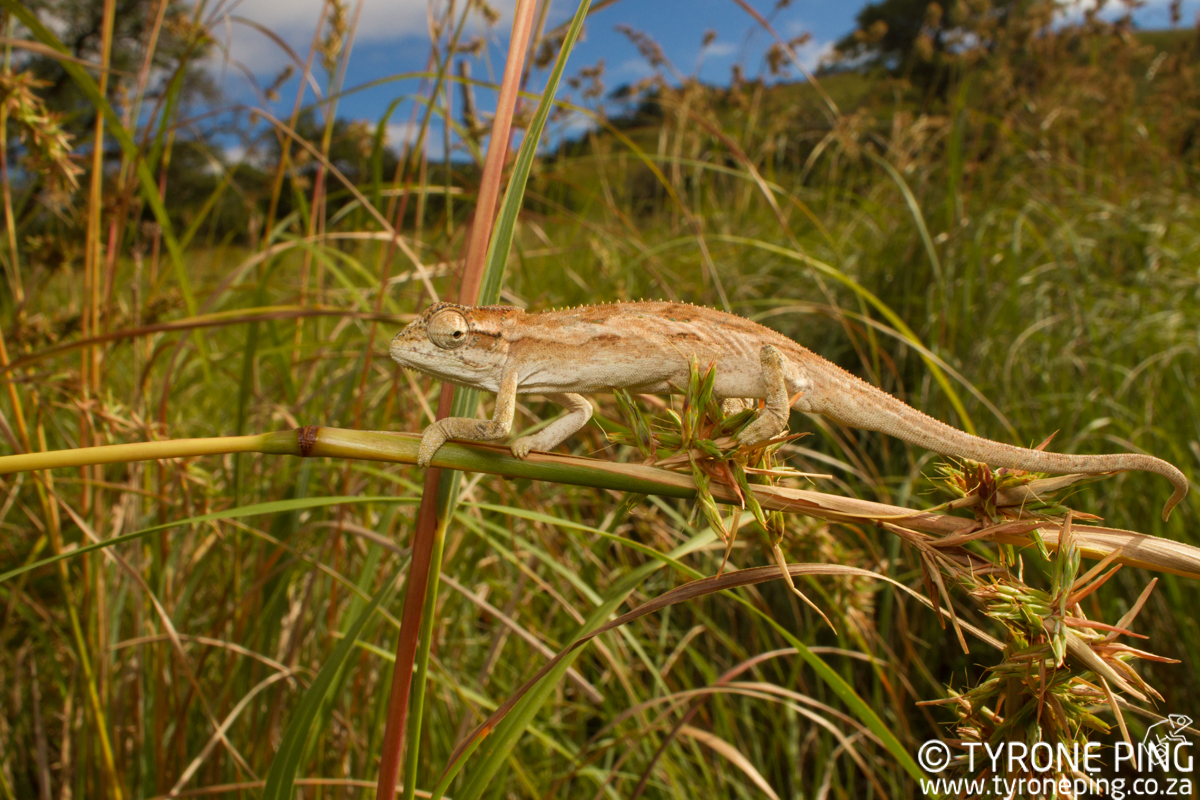
Good friend Luke Kemp, photographing Bradypodion kentanicum - Kentani Dwarf Chameleon
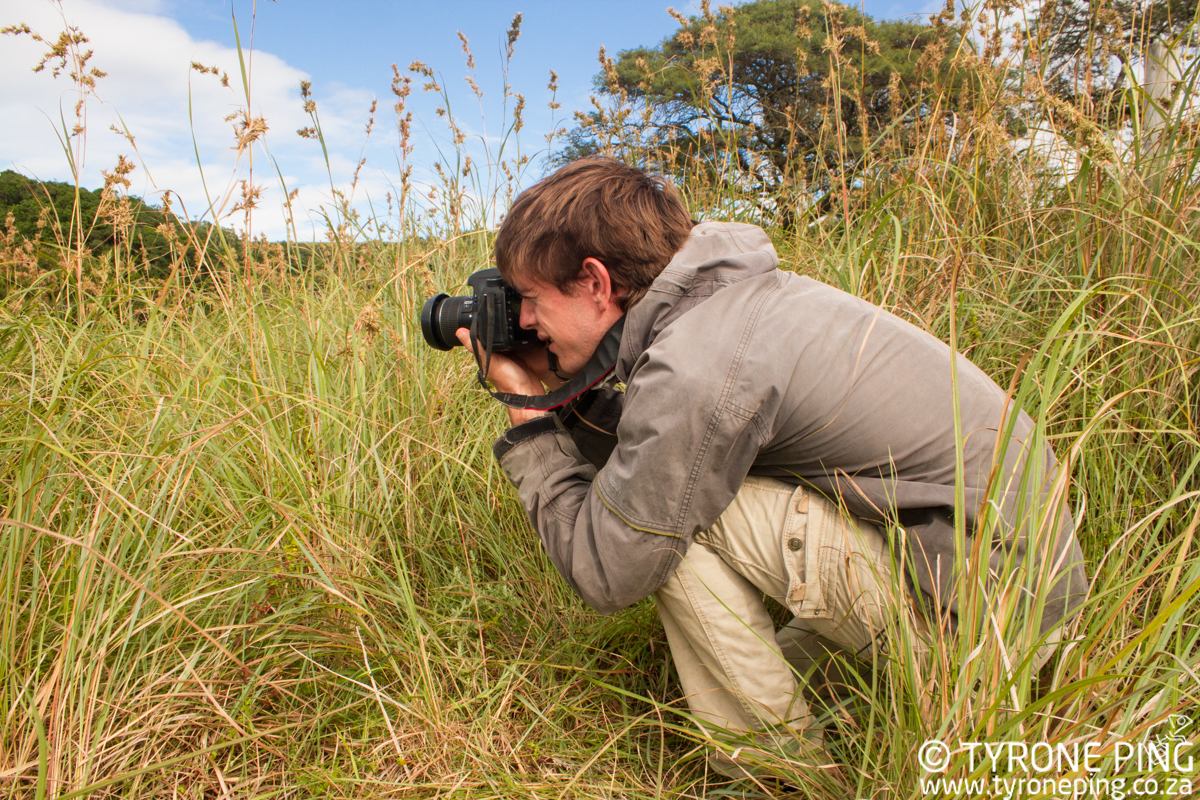
Myself with an adult male for size reference:
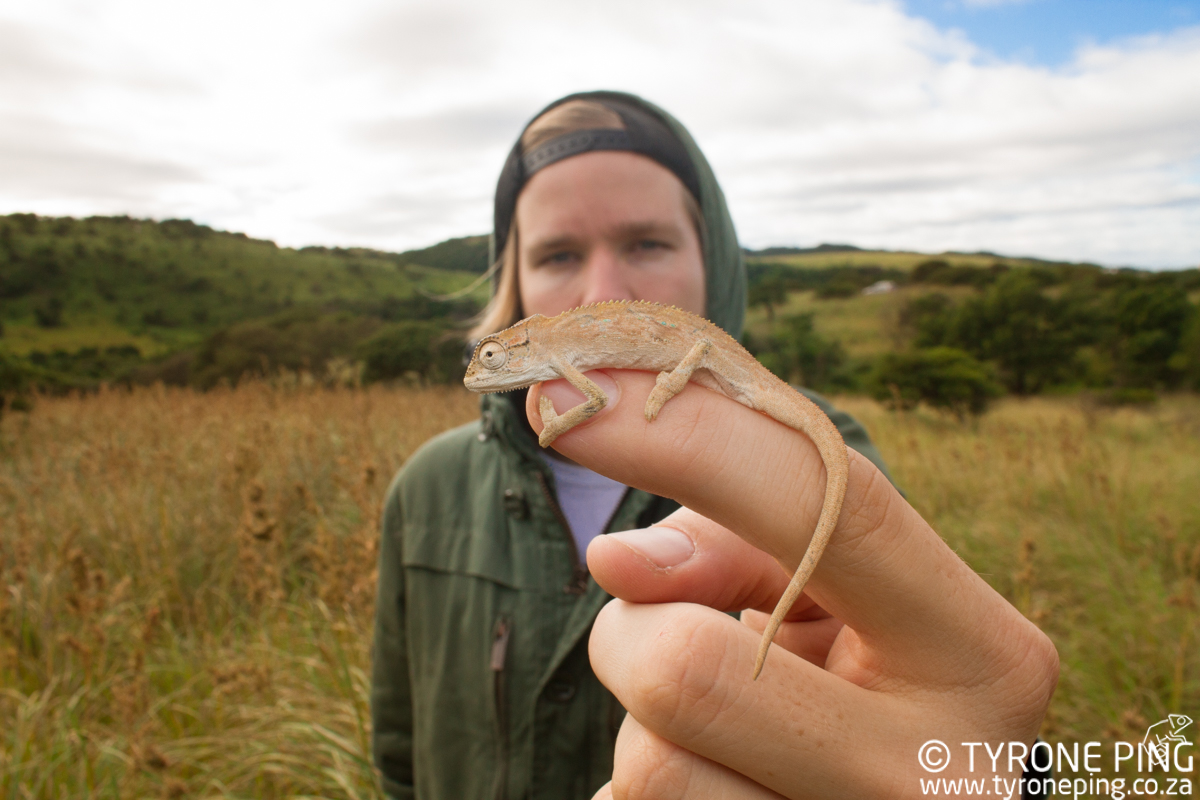
Another successful venture gathering information in conjunction with Herpetological Conservation International
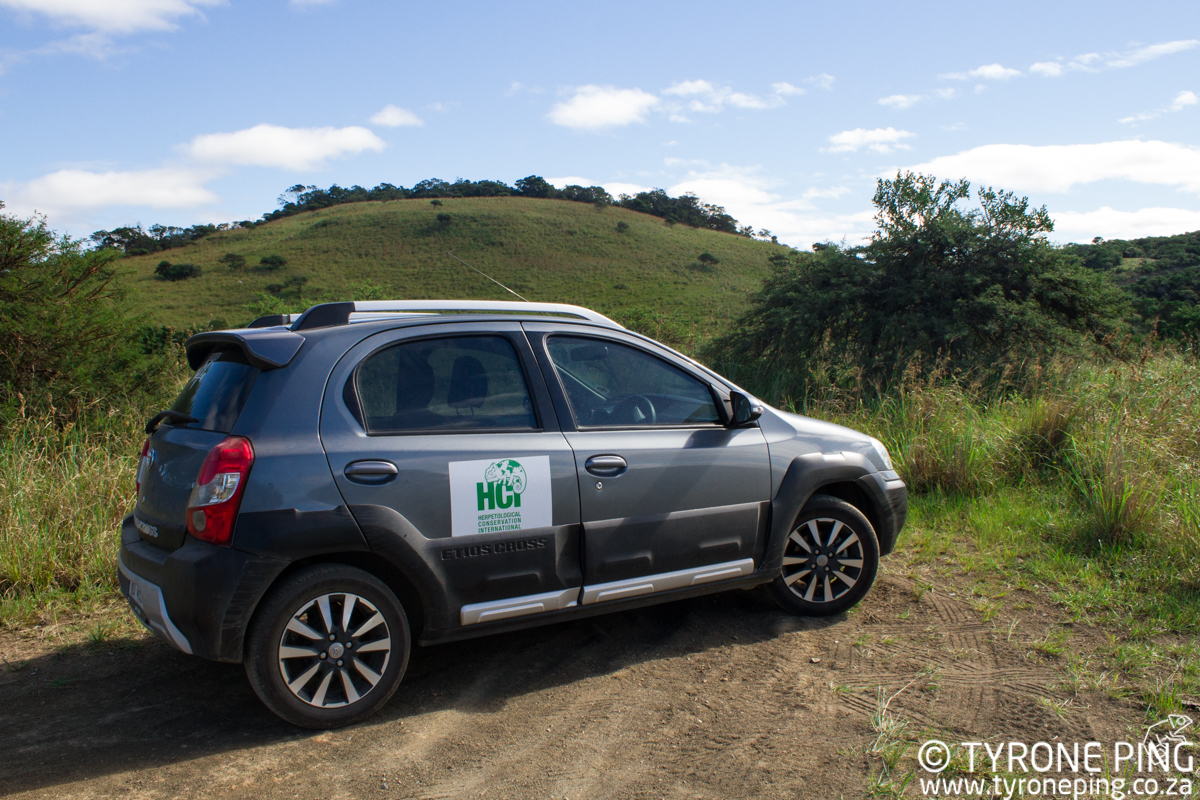
More images available over at: www.tyroneping.co.za
Thanks for looking.
Best.
Last edited:





